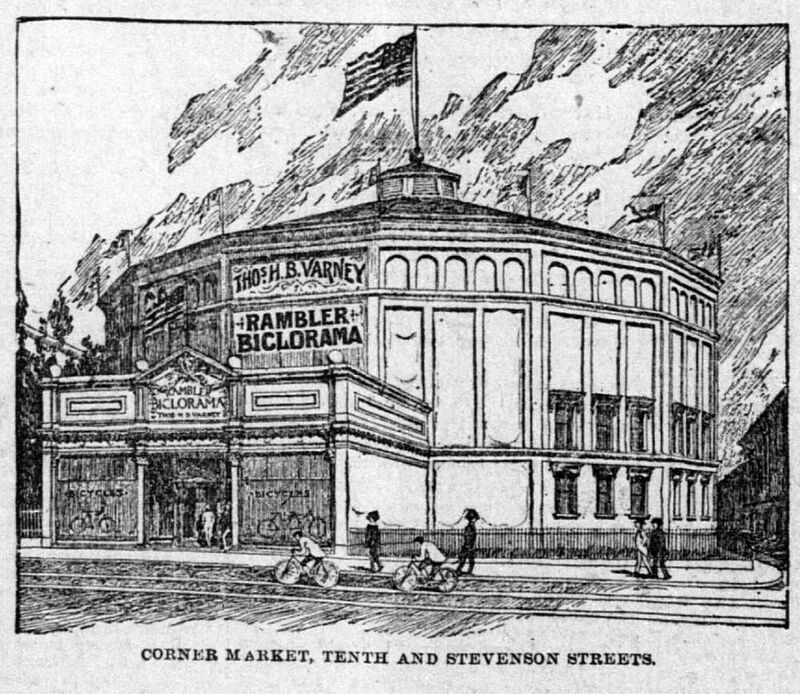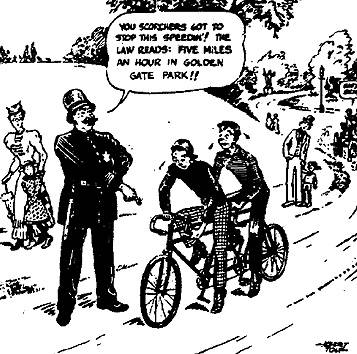19th Century Velodromes in SF: Difference between revisions
No edit summary |
No edit summary |
||
| Line 11: | Line 11: | ||
In the early 1890s there were "velodrome" races at Central Park at 8th and Market Street as well as at the Mechanics' Pavilion that was destroyed in the 1906 fire. | In the early 1890s there were "velodrome" races at Central Park at 8th and Market Street as well as at the Mechanics' Pavilion that was destroyed in the 1906 fire. | ||
Other velodromes were located at | Other velodromes were located at [[Cyclorama at Tenth and Market|10th and Stevenson]], where Dolby has its offices now, and the Valencia Gardens Housing Project. | ||
[[Image:Cyclorama.jpg|800px]] | |||
'''By the end of the 1890s, Thomas Varney's Rambler Bicycle Company had taken over the space and converted it to a velodrome and bicycling sport club.''' | |||
[[Image:transit1$1896-scorcher-parade$scorcher_itm$scorcher-cartoon.jpg]] | [[Image:transit1$1896-scorcher-parade$scorcher_itm$scorcher-cartoon.jpg]] | ||
Latest revision as of 14:05, 2 June 2023
Unfinished History
The cycling Velodrome is seen here at Baker and Fell, just north of the Panhandle, in this c. 1898 photo. Later the Southern Pacific Hospital was built on this same location, a building that is now a senior assisted living facility. Further in the distance is the Calvary Cemetery.
Photo: courtesy OpenSFHistory.org wnp13.032
In the 1890s there was a velodrome at the site of the former Southern Pacific Hospital on the NW corner of Fell and Baker. It opened in November, 1896 closed around 1898/99. By 1899 the Velodrome had been dismantled and the wooden track moved to the Olympic Grounds in the Sunset.
In the early 1890s there were "velodrome" races at Central Park at 8th and Market Street as well as at the Mechanics' Pavilion that was destroyed in the 1906 fire.
Other velodromes were located at 10th and Stevenson, where Dolby has its offices now, and the Valencia Gardens Housing Project.
By the end of the 1890s, Thomas Varney's Rambler Bicycle Company had taken over the space and converted it to a velodrome and bicycling sport club.
Cartoon about "scorchers" (bicycles) from the turn of the 19th to 20th century.



